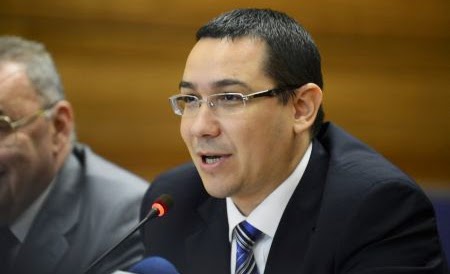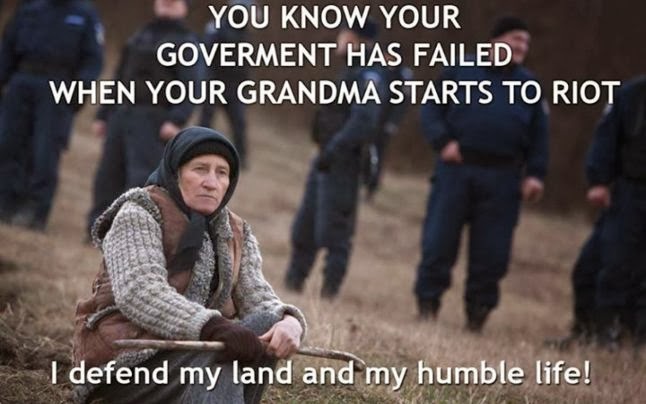A year ago I made several posts about Chevron’s plans to begin fracking operations in Romania’s portion of Moldova. News surfaced on Friday that Chevron has relinquished interests in drilling frackable shale fields in Romania (and other countries), completely ending all of Chevron’s work on shale gas fracking in Eastern Europe. The news comes from no less than the Wall Street Journal![]() , Bloomberg Business
, Bloomberg Business![]() , and Chevron’s yearly 10K filing with the SEC
, and Chevron’s yearly 10K filing with the SEC![]() .
.
The town of Pungesti, in the heart of Romania’s portion of Moldova, had learned enough about the side effects of fracking, after Chevron began work on a drilling pad just south of town, that they staged an intense months-long protest that eventually drew world-wide attention. Despite the protests, Chevron was able to start drilling an exploratory well in April 2014, finishing the exploratory work in July 2014.
In November 2014, in the final weeks of Romania’s national elections that saw Klaus Iohannis win over then-Prime Minister Victor Ponta, Ponta said during a national TV broadcast “It looks like we don’t have shale gas, we fought very hard for something that we do not have. I cannot tell you more than this but I don’t think we fought for something that existed.” (original: “Oricum s-a amânat, pentru că se pare că nu avem gaze de şist, ne-am bătut foarte tare pe ceva ce nu avem. Nu pot să vă spun mult mai mult decât atât, dar nu cred că ne-am bătut pe ceva care exista.”) Ponta was running for President of Romania, but lost to Iohannis, and was able to retain his position as Prime Minister and has since been pushed out of the Prime Minister job .
At the time Chevron responded saying that their engineers were still studying samples. But it was a clue that perhaps the results of the exploratory drilling were disappointing.
Indeed, a Chevron spokesperson told the Wall Street Journal on Friday, Feb 20, 2015, that they’re “are in the process of relinquishing our concession interests” without explaining why.
The company’s 10K yearly filing with the SEC, also filed on Friday, disclosed the following phase-outs of activity in Eastern Europe:
Lithuania: Chevron divested its 50 percent interest in an exploration and production company in mid-2014.
Poland: In first-half 2014, Chevron completed a 3-D seismic survey on the Grabowiec concession. The company also entered into a joint exploration agreement covering Chevron’s Grabowiec and Zwierzyniec licenses and two adjacent licenses in early 2014. In fourth quarter 2014, Chevron relinquished two shale concessions (Frampol and Krasnik) in southeastern Poland. In early 2015, Chevron announced the discontinuation of exploration activities in Poland.
Romania: In 2014, drilling of the first exploration well in the Barlad Shale concession in northeast Romania was completed, as was a 2-D seismic survey across two of the three concessions in southeast Romania. Chevron intends to pursue relinquishment of its interest in these concessions in 2015.
Ukraine: In 2013, Chevron signed a PSC with the government of Ukraine for a 50 percent interest and operatorship of the Oleska Shale block in western Ukraine. In fourth quarter 2014, Chevron terminated the agreement.
The protests in Pungesti was too severe, and Chevron decided to back off — this seems very unlikely
There’s a technical reason, that engineers weren’t able to discern a way to make Fracking work in these shale fields. If so, it would have to be something that affects all four of the countries named above.
Falling oil prices are apparently making fracking uneconomical, and that Chevron is cutting its losses.
Increasing tension in Ukraine, following the western-backed Coup of Ukraines government a year ago, makes business investment in that region very risky. If the fighting over Ukraine were to break out into a full scale war, it might not be contained just to Ukraine. Romania could become embroiled if Russia tries to take back Moldova and Romania tries to intercede, for example. NATO, the EU and the US could escalate the fighting into a broad-scale war over Eastern Europe.
BP’s annual “energy outlook” says it’s unlikely to be any significant shale production in Europe over the next 20 years because conditions aren’t as good as they were in the U.S.
ExxonMobil, France’s Total SA and Marathon Oil, have all pulled out of projects in Poland.
- Highway design could decrease death and injury risk, if “we” chose smarter designs - March 28, 2015
- GM really did trademark “range anxiety”, only later to abandon that mark - March 25, 2015
- US Government releases new regulations on hydraulic fracturing, that some call “toothless” - March 20, 2015
- Tesla Motors magic pill to solve range anxiety doesn’t quite instill range confidence - March 19, 2015
- Update on Galena IL oil train – 21 cars involved, which were the supposedly safer CP1232 design - March 7, 2015
- Another oil bomb train – why are they shipping crude oil by train? – Symptoms of fossil fuel addiction - March 6, 2015
- Chevron relinquishes fracking in Romania, as part of broader pull-out from Eastern European fracking operations - February 22, 2015
- Answer anti- electric car articles with truth and pride – truth outshines all distortions - February 19, 2015
- Apple taking big risk on developing a car? Please, Apple, don’t go there! - February 16, 2015
- Toyota, Nissan, Honda working on Japanese fuel cell infrastructure for Japanese government - February 12, 2015





















Pingback: Shell, Chevron, pull out of fracking deals in Ukraine citing the war with Separatists and Russia | The Long Tail Pipe
Pingback: Fracking may be returning to Romania, Oil & Gas summit scheduled for March 2016 | The Long Tail Pipe